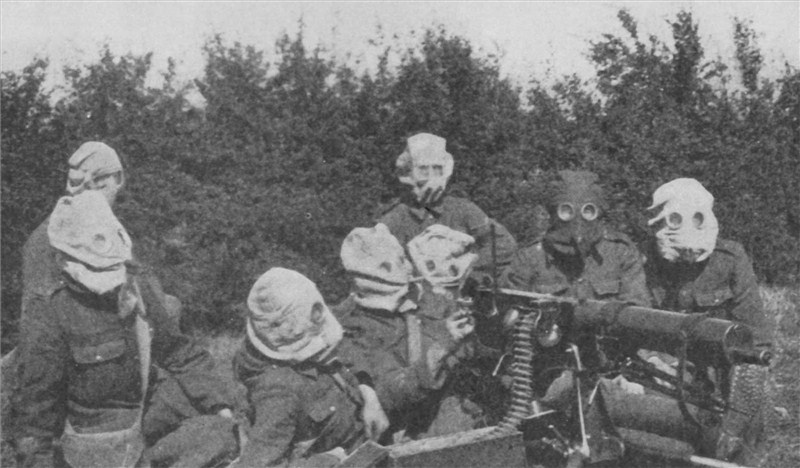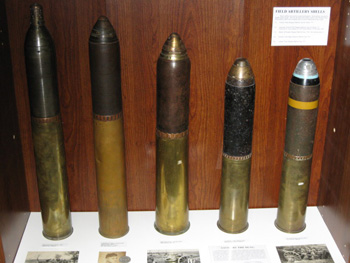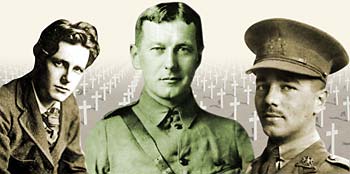Last Wednesday, Emeritus Professor Alan Dronsfield FRSC (currently based at the University of Derby), delivered a timely lecture entitled "The First World War - Its Chemical Origins". Alan outlined the complexity of both the
causes of the war and the alliances on each side. He described World War I as
the war of the chemists, with World War II being the war of the physicists. Both sides in the conflict were confident they would
win fairly quickly. Alan suggested that no nation declares war unless it is
confident it will win. The Allies believed that, being largely land
locked, they would be able to blockade Germany, thereby eliciting their surrender.
 In particular it
was considered an easy option to block the shipment of Chile saltpetre between Germany and Chile, traditionally a
vital ingredient in the manufacture of fertilisers and explosives, cordite in
particular. Whilst poison gases are often
associated with WWI, Alan said that in terms of deaths, they had a much smaller
impact than contemporary developments in shells, bullets and explosives chemistry.
In particular it
was considered an easy option to block the shipment of Chile saltpetre between Germany and Chile, traditionally a
vital ingredient in the manufacture of fertilisers and explosives, cordite in
particular. Whilst poison gases are often
associated with WWI, Alan said that in terms of deaths, they had a much smaller
impact than contemporary developments in shells, bullets and explosives chemistry. Shells and Bullets Major-General Henry Shrapnel
(1761–1842), an English artillery officer, developed an artillery shell that
had a timer device that was set to break open the shell at a specified time after
being fired, releasing small metal balls in all directions. When fired in a
high trajectory by howitzers, and with the shell exploding just above the
ground, these proved to be lethal weapons in trench warfare; traditional shells that
exploded on impact with the ground were generally less devastating. The development of cordite facilitated the development of high precision fuses for the first time, which enabled a gun crew to adjust the timing of the
fuse according to what happened with the first few shells, with the aim of timing the explosion to coincide with their exploding just above trenches. German forces redesigned the components of the
shells to maximise their impact. Due to the development of the ‘all in
one’ bullet a rifleman could shoot far quicker than the twice per minute of a
good rifleman in previous centuries. The introduction of the machine gun was a
means of firing the ‘modern’ bullet at a very high rate.
Shells and Bullets Major-General Henry Shrapnel
(1761–1842), an English artillery officer, developed an artillery shell that
had a timer device that was set to break open the shell at a specified time after
being fired, releasing small metal balls in all directions. When fired in a
high trajectory by howitzers, and with the shell exploding just above the
ground, these proved to be lethal weapons in trench warfare; traditional shells that
exploded on impact with the ground were generally less devastating. The development of cordite facilitated the development of high precision fuses for the first time, which enabled a gun crew to adjust the timing of the
fuse according to what happened with the first few shells, with the aim of timing the explosion to coincide with their exploding just above trenches. German forces redesigned the components of the
shells to maximise their impact. Due to the development of the ‘all in
one’ bullet a rifleman could shoot far quicker than the twice per minute of a
good rifleman in previous centuries. The introduction of the machine gun was a
means of firing the ‘modern’ bullet at a very high rate. With alizarin having
already been identified as an active ingredient in Madder, the new structural formalism helped German
chemists Grabe and Libermann, working for BASF, to find a way, in 1868 to synthesise
alizarin from anthracene, and at a fraction of the cost of the natural product.
This proved to be a milestone in the international dye industry and triggered a
major development of the chemical industry in Germany; at the time few of the
best brains in Britain were attracted to chemistry: Academia being too lofty for contemplating the "applied sciences"!
With alizarin having
already been identified as an active ingredient in Madder, the new structural formalism helped German
chemists Grabe and Libermann, working for BASF, to find a way, in 1868 to synthesise
alizarin from anthracene, and at a fraction of the cost of the natural product.
This proved to be a milestone in the international dye industry and triggered a
major development of the chemical industry in Germany; at the time few of the
best brains in Britain were attracted to chemistry: Academia being too lofty for contemplating the "applied sciences"! This industrial lead was
further advanced when in 1909 Fritz Haber discovered how to manufacture ammonia
from the nitrogen in air, thereby providing a means of producing fertiliser, nitric
acid and explosives. This process undermined the Allies’ hopes of a blockade of
Chile saltpetre, hastening a German surrender. During WW1 Haber was an
enthusiastic advocate of chemical warfare and directed German research seeking improvements
in poison gases. For example, he sought chemicals that weren’t absorbed by the
filter in gas masks as was the case with chlorine. One approach was to disperse arsenical powders that would pass through a gas mask and cause sickness. Then the gas would get you!In 1918 Haber was awarded
the Nobel Prize, a controversial decision because of his work on poison gases
during WW1. Although the allies all had active chemical warfare programmes as well. Alan spoke about him being a German patriot who, because he was
Jewish, emigrated in 1934 with the build-up of National Socialism in Germany, only
to die a few months later in Switzerland after a short sojourn in England.
This industrial lead was
further advanced when in 1909 Fritz Haber discovered how to manufacture ammonia
from the nitrogen in air, thereby providing a means of producing fertiliser, nitric
acid and explosives. This process undermined the Allies’ hopes of a blockade of
Chile saltpetre, hastening a German surrender. During WW1 Haber was an
enthusiastic advocate of chemical warfare and directed German research seeking improvements
in poison gases. For example, he sought chemicals that weren’t absorbed by the
filter in gas masks as was the case with chlorine. One approach was to disperse arsenical powders that would pass through a gas mask and cause sickness. Then the gas would get you!In 1918 Haber was awarded
the Nobel Prize, a controversial decision because of his work on poison gases
during WW1. Although the allies all had active chemical warfare programmes as well. Alan spoke about him being a German patriot who, because he was
Jewish, emigrated in 1934 with the build-up of National Socialism in Germany, only
to die a few months later in Switzerland after a short sojourn in England. Alan finished his presentation
by dramatically illustrating the nature of WW1 warfare with a series of
photographs and slides of poetry written about warfare. This was a very moving finale to a fascinating talk.
Alan finished his presentation
by dramatically illustrating the nature of WW1 warfare with a series of
photographs and slides of poetry written about warfare. This was a very moving finale to a fascinating talk.
Bob Roach and Dave Hornby
No comments:
Post a Comment